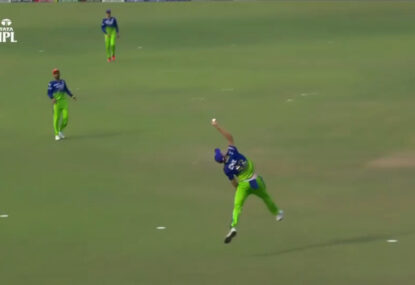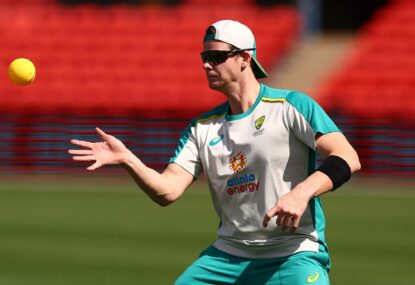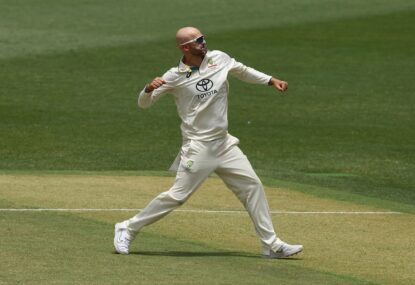It was a familiar tale for the Australian ODI team over the past week, as the men in green and gold slumped to yet another series defeat with a 2-1 loss to South Africa on home soil.
This would be the team’s fifth straight ODI series loss, having not triumphed in the fifty-over format since January 2017 against Pakistan.
With a World Cup less than 12 months away, the signs are looking rather ominous for Australia who despite showing some positive signs were completely outplayed by a South African side rife with injury and uncertainty.
So, as preparation towards next year’s tournament in England intensify what are the major problems facing selectors?
Here is my view on what needs to be highlighted.
The spinner
A feature of many of the world’s best limited over teams is an attacking spinner that takes wickets and provides a genuine foil for the quicks.
Take for example England’s Adil Rashid, who’s ability to turn the ball both ways and really deceive batsmen has been critical in his sides rise to one of the world’s best one day teams.
This is something Australia have lacked since the days of Shane Warne, with nobody really able to cement themselves as a mainstay in the Australian side in the limited overs format.
The recent series against South Africa really highlighted this problem, as Aaron Finch was rather limited in his options to fill up the overs not taken by his star pace attack of Pat Cummins, Mitchell Starc and Josh Hazlewood.
With the World Cup getting closer, it is really time Australia make a decision regarding this position in the team rather than just rotating a number of players from the domestic scene in and out of the side.
With Adam Zampa being the incumbent, it is important to work out whether the young spinner is the man they want to persist with moving forward.
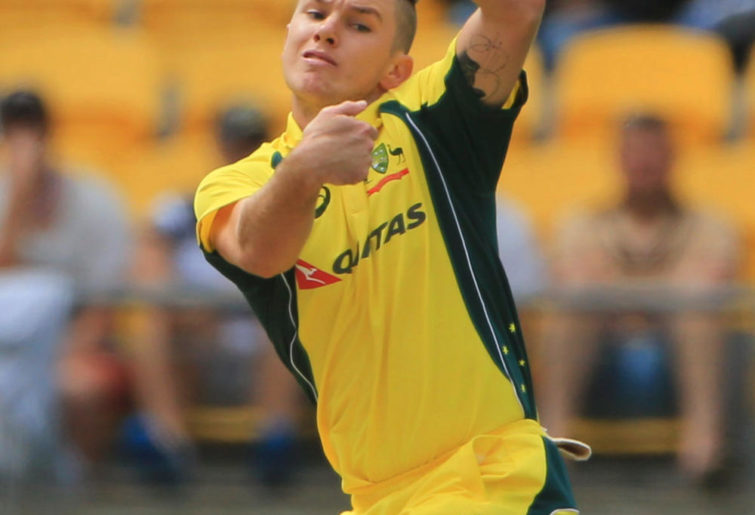
Australia’s Adam Zampa bowls (AAP Image/SNPA, John Cowpland)
After showing strong form in the JLT Cup, Zampa was somewhat of a disappointment against the South Africans with his two opportunities yielding figures of 0/32 (off six overs) and 0/57 (off nine overs).
These performances showed a man nervous about his position in the side and simply uncomfortable in the international arena, which is a real worry for a bowler possessing such great potential.
The inconsistency of this position in the team has seen a number of different options tried and quickly dumped over the past 12 months.
After playing four of the five ODIs against England last summer, Zampa was surprisingly dropped out of the squad for the return series in England in July and August.
In that series (which ended in a 5-0 whitewash to England), Australia first played Ashton Agar as their front-line spinner before adding seasoned veteran Nathan Lyon to the side for the final two encounters.
Zampa was then thrust back into the ODI team for the South Africa series, only given two games to show off his craft before facing the chopping block again leading into the sides next series against India in January.
Although competition for spots is healthy, Australia’s inability to back in a short form spinner is definitely a worry heading into the World Cup where spin will most likely play a large role.
The time is now for Australia to choose the direction they want to take moving forward in this department and really stick with it.
Whether it be to continue nurturing the upside of Zampa, relying on the consistency of Lyon or taking a chance on another young prospect like Mitchell Swepson or Lloyd Pope.
The time is now for Australia to really back someone and avoid constantly changing tune.
The batting combination
Now it would be very easy of me to have just highlighted the batting as a whole following the calamity of the past week’s efforts.
However, to me the major problem is the combination of batsmen and trying to find a top order that gels.
Obviously without Steve Smith and David Warner in the top four it does make it tough, but the lack of consistency in Australia’s batting lineup is making it very difficult for them to function consistently.
Travis Head is an excellent example of the trouble Australia is facing in this department, as after two poor showings they seemed to write him off as an opening option.
The mix and matching down in the middle order has also been cause for much confusion with the likes of Alex Carey, Glenn Maxwell and Marcus Stoinis constantly switching between number 5, 6 and 7.
The main takeaways I took from Australia’s batting in this series is that nobody was confident in their position in the team and that leading into a World Cup there are way too many question marks regarding the best combination of players.
If you look at teams like England, India and South Africa, they are now looking to really solidify their lineups for the World Cup and build they chemistry needed to produce success in such an important tournament.
The Australians on the other hand look to be completely at sea with who will feature in the side in eight months’ time with only a handful of batsmen showing themselves as long term prospects.
A large majority of players in the one day set up at the moment are simply not good enough on the international stage at the moment and it is having a detrimental effect on the team’s ability to construct match-winning scores.

Aaron Finch (second right) of Australia and his team (AAP Image/Richard Wainwright)
The captain
Perhaps the biggest question mark surrounding the Australian cricket team in the one-day format is who should be the long-term captain?
Following a night mare series in England, new test captain Tim Paine was quickly relieved of the white ball duties with long time opener Aaron Finch taking over the reins.
In his first series as captain, Finch performed admirably with clever field positioning and good use of his bowlers a highlight of his work as skipper.
Although he didn’t pass fifty with the bat, Finch did his claims to be long-term captain of the side absolutely no harm as he really seemed to take control of the team.
But the question still remains, is Finch the real solution?
With Australian cricket short on genuine leaders following the suspensions of Steve Smith and David Warner, it is really hard to say who should captain the side leading into the World Cup.
The selectors were bold in backing inexperienced wicketkeeper Alex Carey as a co vice-captain for the series against South Africa, with the 27-year-old showing great maturity and leadership throughout all three matches.
However, having only played a handful of international matches it seems a little premature to don the South Australian keeper the national captaincy.
Travis Head could be another option having captained his state side for a number of years and gaining adequate amounts of experience at international level at just 24 years of age.
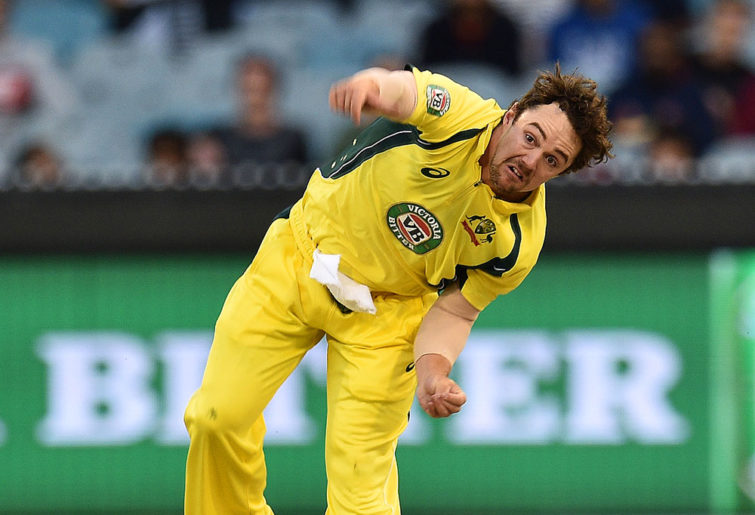
Travis Head bowls. (AAP Image/Julian Smith)
Youth is the issue with Head though as despite his experience is yet to really find himself and hold down a position in the side.
Fast bowlers Josh Hazlewood, Pat Cummins and Mitchell Starc could also come into the mix, but would be unlikely choices as the captaincy may affect their ability to perform at the optimum level with ball in hand.
Test veterans Shaun Marsh and Usman Khawaja also spring to mind due to their wealth of knowledge and experience but their positions in the side come World Cup and age do hold them back from this role.
With so much to think about regarding one day cricket, this stands as probably the most important decision to make as we move into next year’s World Cup as finding somebody to lead the team long term will be paramount in helping them turn this poor form around.



































































































